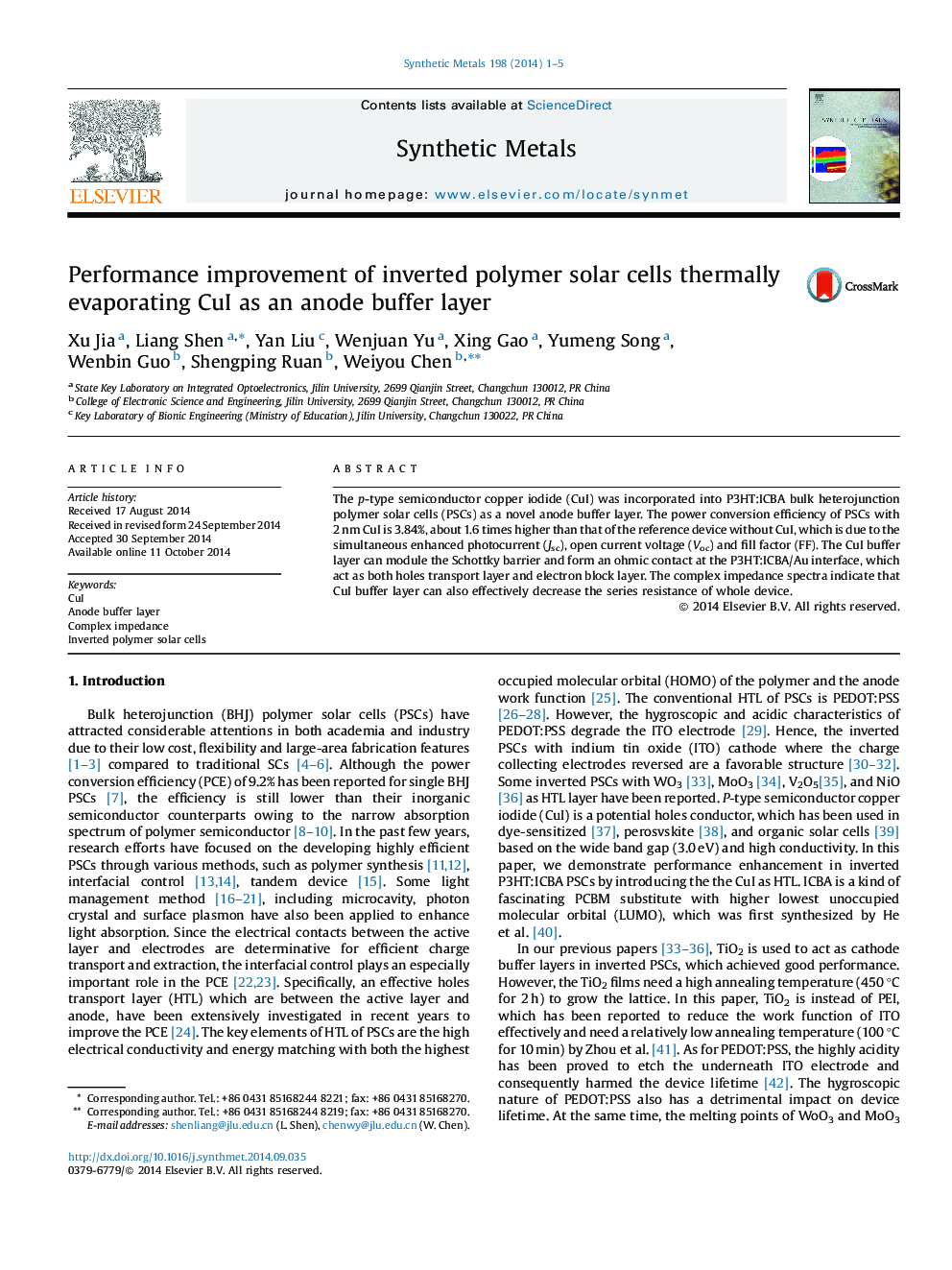| Article ID | Journal | Published Year | Pages | File Type |
|---|---|---|---|---|
| 1440706 | Synthetic Metals | 2014 | 5 Pages |
•CuI was thermally evaporated as an anode buffer layers in PSCs.•The PCE with 2 nm CuI is 3.84%, which is 1.6 times higher than without.•The complex impedance spectra indicate that CuI can decrease the series resistance.
The p-type semiconductor copper iodide (CuI) was incorporated into P3HT:ICBA bulk heterojunction polymer solar cells (PSCs) as a novel anode buffer layer. The power conversion efficiency of PSCs with 2 nm CuI is 3.84%, about 1.6 times higher than that of the reference device without CuI, which is due to the simultaneous enhanced photocurrent (Jsc), open current voltage (Voc) and fill factor (FF). The CuI buffer layer can module the Schottky barrier and form an ohmic contact at the P3HT:ICBA/Au interface, which act as both holes transport layer and electron block layer. The complex impedance spectra indicate that CuI buffer layer can also effectively decrease the series resistance of whole device.
Graphical abstractFigure optionsDownload full-size imageDownload as PowerPoint slide
